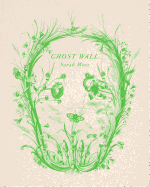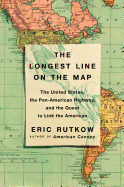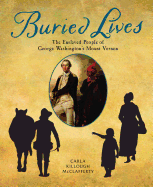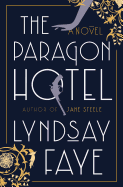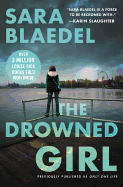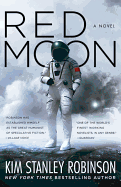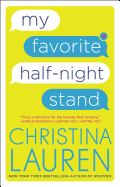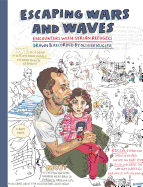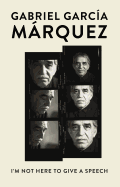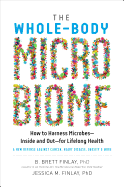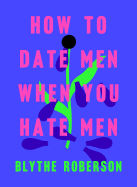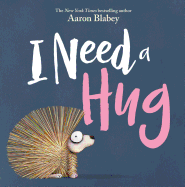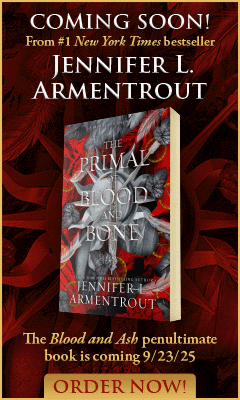Week of Tuesday, January 8, 2019
By any measure, the last two years in American politics have been turbulent, if not downright disorienting. As politicians engage in shouting matches on social media (and elsewhere), I've been turning to an unlikely source of comfort: memoirs by staffers from the Obama White House.
 It isn't just nostalgia, or denial. Whether they're youthful idealists like David Litt (Thanks, Obama; Ecco Press, $16.99), who jumped on the former senator's campaign and ended up spending years working for him, or veteran public servants like Wendy R. Sherman (Not for the Faint of Heart; Public Affairs, $28), whose career spans multiple administrations, these voices have helped me in two key ways. They remind me of what it was like to live in slightly saner--if no less complicated--political times. And they help explain, with their insider views of the Obama administration's triumphs and failures, how the U.S. reached its current moment.
It isn't just nostalgia, or denial. Whether they're youthful idealists like David Litt (Thanks, Obama; Ecco Press, $16.99), who jumped on the former senator's campaign and ended up spending years working for him, or veteran public servants like Wendy R. Sherman (Not for the Faint of Heart; Public Affairs, $28), whose career spans multiple administrations, these voices have helped me in two key ways. They remind me of what it was like to live in slightly saner--if no less complicated--political times. And they help explain, with their insider views of the Obama administration's triumphs and failures, how the U.S. reached its current moment.
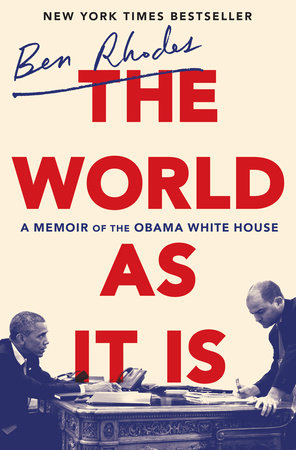 Ben Rhodes, who spent nearly a decade working on foreign policy and communications for Obama, chronicles the complex issues, impossible decisions and flat-out unbelievable moments of his political career in The World As It Is (Random House, $30). His thoughtful accounts of the Arab Spring and the reopening of U.S.-Cuba relations make a great pairing with Sherman's blow-by-blow of negotiating the Iran nuclear deal and Litt's breezy but sharply observed rendering of life as a speechwriter for Obama. These memoirs, plus Alyssa Mastromonaco's Who Thought This Was a Good Idea? (Twelve, $15.99), offer insights on leadership and show their authors' staunch commitment to hard work and public service.
Ben Rhodes, who spent nearly a decade working on foreign policy and communications for Obama, chronicles the complex issues, impossible decisions and flat-out unbelievable moments of his political career in The World As It Is (Random House, $30). His thoughtful accounts of the Arab Spring and the reopening of U.S.-Cuba relations make a great pairing with Sherman's blow-by-blow of negotiating the Iran nuclear deal and Litt's breezy but sharply observed rendering of life as a speechwriter for Obama. These memoirs, plus Alyssa Mastromonaco's Who Thought This Was a Good Idea? (Twelve, $15.99), offer insights on leadership and show their authors' staunch commitment to hard work and public service.
 Mastromonaco wins for best title (and most wry humor), but all four books provide fascinating behind-the-scenes glimpses into the daily lives unfolding alongside massive world events. Even more importantly, they remind me that even in fraught and divisive times, the American experiment of democracy is still--à la Mastromonaco--an excellent idea. --Katie Noah Gibson, blogger at Cakes, Tea and Dreams
Mastromonaco wins for best title (and most wry humor), but all four books provide fascinating behind-the-scenes glimpses into the daily lives unfolding alongside massive world events. Even more importantly, they remind me that even in fraught and divisive times, the American experiment of democracy is still--à la Mastromonaco--an excellent idea. --Katie Noah Gibson, blogger at Cakes, Tea and Dreams
Ghost Wall
by Sarah Moss
Silvie's father has long been interested in--even obsessed with--the lives of the ancient Britons. And because Silvie's father's will is absolute, Silvie and her mother spend their summer vacation with him in the north of England, re-enacting Stone Age practices and rituals with a group of anthropology students and their professor. Over the pages of Sarah Moss's slim novel, Ghost Wall, this small group of re-enactors grows ever closer to the past: they forage and hunt, cook over open fires, sleep in a roundhouse and even build a skull-lined barricade similar to those once used to scare off enemies.
"That was the whole point of the re-enactment, that we ourselves became the ghosts, learning to walk the land as they walked it two thousand years ago, to tend our fire as they tended theirs and hope that some of their thoughts, their way of understanding the world, would follow the dance of muscle and bone." This dance becomes dangerous as the group's connection to the past gets stronger and the father's obsession takes on an increasingly violent edge. With stark and haunting prose that perfectly captures the harshness of the conditions the group is re-creating, Ghost Wall explores what the past can teach us about the present and what the present can teach us about the past--especially when the two are not as far removed as we may like to believe. --Kerry McHugh, blogger at Entomology of a Bookworm
Discover: A slim, haunting novel explores questions of history, gender roles and violence through the lens of a modern-day re-creation of Stone Age England.
Mystery & Thriller
The Paragon Hotel
by Lyndsay Faye
Lyndsay Faye (Jane Steele) brings readers a feisty, feminist heroine in this Prohibition-era thriller about a white gun moll from Harlem starting her life over at an all-black hotel in Portland, Ore.
In 1921, 25-year-old Alice "Nobody" James lands at the Paragon Hotel with a satchel containing $50,000 in cash and a bullet hole in her side. She's fleeing an unhinged mobster who once loved her. Her shelter comes courtesy of Max, a black Pullman porter who befriended her on a train during her escape from New York. Max's friends at the Paragon, including irascible hotel owner Dr. Doddrige Pendleton and head housekeeper Mavereen Meader, save Nobody's life and take her in. The Ku Klux Klan is growing ever bolder in Portland, so accepting a white boarder seems a fraught proposition. However, they do so cautiously, and Nobody soon finds a friend in charismatic cabaret singer Blossom Fontaine, who lives down the hall at the Paragon.
Faye's expedition into Oregon's history of racism and a New York City ruled by mobsters is stuffed with danger, luscious period clothing and zinging Jazz Age patter. Once a spy for a criminal mastermind, Nobody changes personas with ease depending on her company, but as her relationships with the Paragon's inhabitants deepen, she begins to realize even she doesn't know the real Alice James. As only the best historical fiction can do, The Paragon Hotel captures a certain period in time and gives the reader ample opportunity to draw connections with the present day. Faye's talent sparkles like champagne bubbles and bugle-bead fringe on a flapper's gown. --Jaclyn Fulwood, blogger at Infinite Reads
Discover: A Prohibition-era gun moll running from her past gets caught up in a mystery when she finds shelter and friendship at Portland's only hotel for African Americans.
The Drowned Girl
by Sara Blaedel
The body of a teenage girl has been found tied to a slab of concrete and floating in a bay near Holbaek, and Detective Louise Rick, an ace at the Copenhagen Police Department, has been poached to work the case. The police go to the press with a missing person report, which elicits a teacher's confirmation that the dead girl is her student, 15-year-old Samra al-Abd. She was one of four kids in a Jordanian immigrant family whose patriarch has a history of violence against Samra and her mother. Rick, who has previously worked a case that involved an honor killing, finds herself going along with her colleagues' inclination to view this as another one.
Rick's journalist best friend Camilla Lind, however, is pushing back against her editor's acceptance of the honor killing angle. Rick and Lind will be familiar to readers of the previous books in the celebrated Danish crime writer Sara Blaedel's Homicide Trilogy, and their respective romantic lives get some ink here. The Drowned Girl (first published in the United States in 2012 as Only One Life) is a hard-nosed thriller with a soft spot for big questions: Is it necessarily culturally insensitive to challenge an ethnic group's sexist traditions? And is the expectation of partial assimilation that's placed on young Muslim immigrants, especially girls, unreasonable? As Rick thinks at one point, "There was an ominous demand that girls had to adapt, but only to a certain extent; otherwise all hell would break loose." In The Drowned Girl, all hell does. --Nell Beram, author and freelance writer
Discover: Directional signals point to an honor killing in the provocative third novel in Sara Blaedel's Homicide Trilogy.
Science Fiction & Fantasy
Red Moon
by Kim Stanley Robinson
Thirty years from now, humankind has mastered the Moon. On the lunar South Pole, the pioneering Chinese have assembled vast underground complexes with thousands of residents. On the North Pole, latecomers (or late returners, in the case of an ailing United States) share crater ice and sunlight. Onto this divided satellite steps Fred Fredericks, a hapless American sent to deliver one half of a pair of quantum-entangled communicators. Unfortunately for Fred, someone wants to kill the target of his delivery--the head of China's lunar presence--and uses him to do it.
Meanwhile, free-spirited Chan Qi, daughter of the Chinese minister of finance, is likewise imperiled by internal political strife. Her father wants her back, her father's enemies want to use or hurt her, and she's gotten illegally pregnant on the Moon. When she and Fred are secreted back to Earth, it begins an adventure across a near-future China. It is a country deeply divided by the upcoming party congress, during which a handful of standing committee members, including Qi's father, will vie for ultimate power.
Red Moon is another star in Kim Stanley Robinson's constellation of successful science-fiction novels. Robinson (the Mars Trilogy, Aurora, New York 2140) is considered among the greatest in the genre and Red Moon shows why. Like many of Robinson's novels, this one is a vision of humanity's greatest desires clashing with our worst instincts. Robinson mixes plenty of heart, realistic technology and political conflict into another great story. --Tobias Mutter, freelance reviewer
Discover: Thirty years from now, China dominates the Moon, where a hapless American gets caught up in political intrigue.
Romance
My Favorite Half-Night Stand
by Christina Lauren
Millie Morris is practically one of the guys. She's a professor of criminology at UC Santa Barbara, and constantly hangs out with her four best friends--Ed, Chris, Reid and Alex, all fellow professors. Millie likes it that way: friendly, pleasant, but not too deep. She hates talking about her feelings, and loves playing games and drinking beer. They're cruising along until the university announces a black-tie gala, and the five friends all realize they need dates. They make a pact to create online dating profiles together, but before they do, Reid and Millie have a drunken, amazing half-night stand.
Determined not to ruin their friendship, they decide to keep it platonic in the future, and jump into the online dating world. The four guys get some reasonable matches, but Millie just keeps getting creepy pictures from a bunch of questionable men. Irritated, she makes up a second, fake profile, and to her shock, she matches with Reid. This leaves her in a tricky position--trying not to notice her attraction to him in real life, but increasingly falling for him online.
A funny, irreverent romp, My Favorite Half-Night Stand is a witty look at the perils of online dating. Having a new book by Christina Lauren (Josh and Hazel's Guide to Not Dating) on the nightstand is sure to make any romance reader happy. And even those who are hesitant to try the genre will laugh out loud at the predicaments Millie gets herself into. --Jessica Howard, bookseller at Bookmans, Tucson, Ariz.
Discover: Online dating complicates IRL friendship in this funny romance from Christina Lauren.
Graphic Books
Escaping Wars and Waves: Encounters with Syrian Refugees
by Olivier Kugler
Journalist illustrator Olivier Kugler has created a powerful chronicle with his book of interviews and drawings, Escaping Wars and Waves: Encounters with Syrian Refugees.
While embedded with Doctors Without Borders, Kugler interviewed and photographed Syrian refugees and the people helping them in camps in Iraq, Greece and France, as well as families who've resettled in England and Germany. He drew scenes and people from his photos and re-created their interviews in a graphic-novel style that captures the plight of displaced people fleeing their beloved but war-torn country. Ahmed, forced to leave Syria with his wife and six children when its infrastructure crumbled, hopes to get to Germany. But he's stuck in a wet, cold single-room tent in an Iraqi camp. Amira, a 23-year-old physics student, arrived in Greece and walked four miles through hot hills to a hospital just in time to give birth to a son who almost died. Many Syrian refugees live in Calais, France, in a camp called "The Jungle," within sight of the ferries going to England but unable to leave because of armed guards, high fences and the inability to get a visa.
Kugler's interviews form an intense and compelling portrait of people who just want to live ordinary lives and the compassionate people helping them. His original style, layering black-and-white sketches with colored drawings and objects highlighted in each scene, creates a sense of motion and realism. This poignant and eloquent close-up view provides an important and rarely seen perspective. --Suzan L. Jackson, freelance writer and author of Book By Book blog
Discover: A powerful and compelling close-up view of the Syrian refugee crisis, told through interviews and drawings from refugee camps around the world.
History
The Longest Line on the Map: The United States, the Pan-American Highway and the Quest to Link the Americas
by Eric Rutkow
Spanning almost 100 years of hemispheric history, The Longest Line on the Map: The United States, the Pan-American Highway and the Quest to Link the Americas by Eric Rutkow (American Canopy) explores an era of increased connectivity between North and South America. Whereas today there is a fervent political movement to separate and insulate the U.S. from its Southern neighbors, in the not-too-distant past, Central and South America were viewed as important trading partners by successive U.S. presidents.
During those decades, Pan-Americanism, as opposed to globalism, was an important U.S. foreign policy goal. It led to the construction of an ambitious motor road connecting the Americas. Rutkow's fascination with the Pan-American highway is evident in this meticulously researched and vividly recounted drama. He combines a historian's eye for detail with a storyteller's skill at bringing to life the dynamic political and social forces that conceived and constructed the international corridor. While working to connect the U.S. and Canada with Mexico, El Salvador, Nicaragua, Colombia and beyond, the U.S. also promoted the building of motor roads in other parts of the world.
Despite its remarkable history and the controversies that surround the still-incomplete road, the highway has never before received the sort of academic attention Rutkow bestows upon it. The Longest Line on the Map is a worthy, thought-provoking read for anyone interested in learning about a time when the "Colossus of the North" opened its doors in friendship and unity to the rest of the Americas. --Shahina Piyarali, writer and reviewer
Discover: An impressively comprehensive and entertaining historical account of the longest road in the world, the highway that runs from Alaska to Argentina.
Essays & Criticism
I'm Not Here to Give a Speech
by Gabriel García Márquez, transl. by Edith Grossman
The hearty humor and intelligence of celebrated Colombian author Gabriel García Márquez (1927-2014) are on full display in I'm Not Here to Give a Speech, a lively selection of the Nobel laureate's speeches. Translated into English by Edith Grossman, the slender volume covers seven decades of García Márquez's life, starting in 1944 with a speech he gave to his schoolmates. The book includes his famous Nobel Prize acceptance speech from 1982, many speeches delivered across Latin America during tumultuous times, and several speeches delivered in his homeland of Colombia, some as recently as 2007.
García Márquez approached his various subjects with self-deprecating humor, admitting early on he was terrified of giving speeches. This sets the stage for an orator of great gifts who can spin stories, riff on poetry and delve deep into world history without a single note of self-importance. Fellow writers will enjoy his commentary on the craft of writing. "We're writers not through our own merits but because of the misfortune that we can't be anything else," he wittingly said in a speech in 1972. Other speeches touch upon journalism, nuclear proliferation, globalization and the drug trade. But when talking about the history and destiny of Latin America that García Márquez became his most passionate and brilliant. He called for a new era of creativity led by Latin American culture, by those "masters of the imagination."
I'm Not Here to Give a Speech gives fresh voice to a legend. A rousing read for lovers of world literature. --Scott Neuffer, writer, poet, editor of trampset
Discover: This collection showcases Nobel laureate Gabriel García Márquez's powerful oratory.
Health & Medicine
The Whole-Body Microbiome: How to Harness Microbes--Inside and Out--for Lifelong Health
by B. Brett Finlay and Jessica M. Finlay
In The Whole-Body Microbiome: How to Harness Microbes--Inside and Out--for Lifelong Health, the formidable father-daughter team of scientists B. Brett Finlay (Let Them Eat Dirt) and Jessica M. Finlay explores an invisible world. They analyze the microbes that reside all around and inside our bodies, and they explain how these teeming microbial colonies are essential to a long, active life. Aging healthfully is their focus, and their overarching, inspirational message is one of hope: by nourishing the body's microbiome we can effectively boost its ability to fight disease.
Reviewing expert research on the protective bacteria present on every inch of our skin--as well as the heart, brain, lungs, mouth, immune system, the female reproductive system and the environment--the Finlays prescribe practical measures that can help protect against age-related diseases of the mind and body. We learn, for example, that something as simple as properly brushing teeth boosts the oral microbiome and thereby promotes health throughout the entire body, including protecting against heart disease and even dementia. Encouraging readers to embrace rather than eradicate bacteria on the skin, the authors recommend using regular soap instead of antibacterial soap, because the latter kills off both good and bad microbes.
While there are factors beyond our control that can lead to ill health as we age, it is reassuring to learn that so much is within our power to manage proactively. With its upbeat approach and valuable diet and lifestyle recommendations, The Whole-Body Microbiome will empower readers to invest in the lifelong process of aging well. --Shahina Piyarali, writer and reviewer
Discover: A gerontology expert and a biochemist reveal how everything related to aging, from wrinkles to Alzheimer's, has a microbial link that each of us has the power to control.
Humor
How to Date Men When You Hate Men
by Blythe Roberson
Dating in the 21st century is complicated. So is patriarchy. Humorist Blythe Roberson considers both in How to Date Men When You Hate Men--so titled because "it just didn't sound as catchy to name the book How to Date Men When They Are Born into and Brainwashed by an Evil System That Mightily Oppresses Women." Don't be fooled, though, Roberson likes men. A lot. And lots of them. As she puts it, "I have ended up with a number of crushes greater than the population of Iceland."
In this collection of musings, quips and reflections, Roberson invites readers into an inner monologue, much of which could pull double duty as a stand-up routine. The book is a primer on love and all of its trappings: infatuation, flirting, dating, psychic wounds and break-ups.
And it's hilarious.
A researcher at The Late Show with Stephen Colbert, Roberson has comedy bona fides that run deep. So it's not surprising that How to Date Men When You Hate Men is both funny and smart. Harvard educated, Roberson also makes delightful use of her English major, referencing Roland Barthes ("daddy") even more than she references her crush on actor Timothée Chalamet--which is often.
Really, this is more of a philosophy book than a dating book. It's about how crushes are fun, and how women's crushes get policed differently than men's (Roberson excoriates the common accusation that Taylor Swift is "boy crazy"). It's about considering how so many benchmarks in women's lives seem to be based on women's ability to attract, and keep, a man rather than succeed in their own endeavors. Roberson's answer to that? "Prose before bros." --Katie Weed, freelance writer and reviewer
Discover: In this sharp, entertaining meditation on modern romance, humorist Blythe Roberson wrestles with how not to lose out on love when patriarchy threatens to ruin it.
Children's & Young Adult
I Need a Hug
by Aaron Blabey
A very spiky porcupine needs a hug. From the left-hand page, he asks the rabbit on the right-hand page, "Will you cuddle me, Lou?" The rabbit bolts: "What? With those spikes? Get away from me! Shoo!" The porcupine is undeterred. Next up? Ken, the moose: "I need a hug. Will you cuddle me, Ken?" Leaping off the page, Ken screams, "Help! It's that prickly thing at it again!" Still in place on the left-hand page, the little porcupine asks another animal for a little bit of love: "Will you cuddle me, Joe?" The bear turns tail, "Cuddle you? No, I won't! No No NO NO!"
Finally, the porcupine begins to lose hope, speaking directly to the reader, "No one will hug me. That's not very kind." But, "hey! Wait a minute...." Lou, Ken and Joe all appear, sprinting back toward the porcupine. "You've all changed your mind!" When the animals race past the itty-bitty porcupine, there is little time to feel bad for the hug-starved animal--at the very top of the right-hand page, readers will see that Lou, Ken and Joe are running away from a snake. "Geez," the snake says, "all I did was ask for a kiss." A final page turn shows the snake and the porcupine curled together, wholly blissed out. " 'Well isn't this lovely?' 'Yes, how about this.' "
Aaron Blabey's (The Bad Guys) acrylic, pen and pencil illustrations are eye-catching, with each spread making great use of boldly colored blank space. On a field of bright pink, neon green or storm-cloud blue, Blabey's animals pop, their exaggerated features displaying tons of emotion. I Need a Hug is entertaining and sweet. --Siân Gaetano, children's and YA editor, Shelf Awareness
Discover: A tiny porcupine wants some love in Aaron Blabey's I Need a Hug.
Buried Lives: The Enslaved People of George Washington's Mount Vernon
by Carla Killough McClafferty
By the time George Washington died in 1799, his estate, Mount Vernon, was home to 317 enslaved African American men, women and children. The irony was that "the man who led the fight for American freedom" remained a slave owner his entire life, despite his well-stated personal objections to slavery. In Buried Lives, award-winning author Carla Killough McClafferty (The Many Faces of George Washington: Remaking a Presidential Icon) confronts Washington's role as a conflicted slave owner through the stories of six enslaved Mount Vernon residents.
William Lee was Washington's valet, attending to all his personal needs. Lee served Washington through the Revolutionary War; when severe knee injuries made service impossible for Lee, Christopher Sheels became Washington's personal valet. Caroline was a housemaid in the mansion, while her husband, Peter Hardiman, ran Mount Vernon's large-scale mule-breeding operation. Ona Maria Judge, who began service as a child at Mount Vernon, was Martha's personal maid and accompanied the first First Lady to New York and Philadelphia. Hercules was the renowned "chief cook in the kitchen of the president of the United States" in Philadelphia who impressed dignitaries from all over the world with his culinary prowess.
Relying on extensive research, McClafferty provides an alternative history to the existing, too-often idealized founding fathers' mythology. Beyond the biographies, McClafferty continues with "And Then What Happened?," culling additional information about the descendants of the six slaves. She devotes multiple chapters to the recent archeological reclamation and restoration of the unmarked, untended burial site of Mount Vernon's enslaved and further illuminates her words with drawings, maps, newspaper clippings, photographs and other relevant documents that enhance an already compelling narrative. McCafferty's Buried Lives is a long overdue, careful testimony for a new generation of questioning, challenging readers. --Terry Hong, Smithsonian BookDragon
Discover: This illuminating middle-grade history focuses on six African Americans enslaved by George Washington and his family.
| Advertisement The Primal of Death Must Be Defeated |


